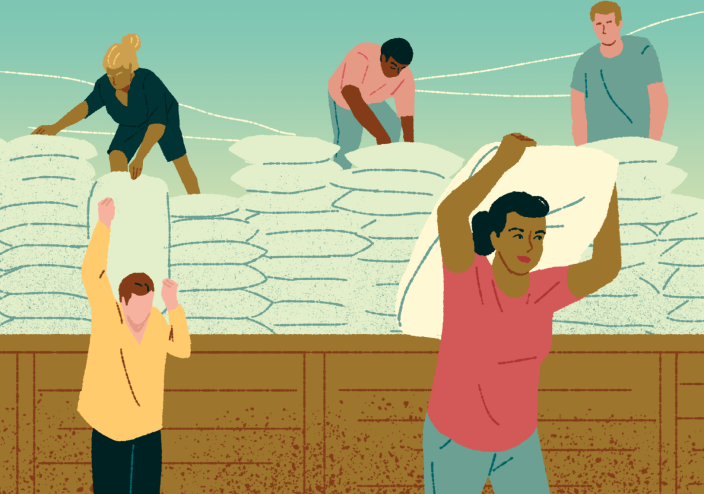Resilience

Resilience refers to how well communities and ecosystems respond when disasters or changes happen. Resilience will become more important as the climate emergency makes extreme weather events, political instability, health crises and disruptions to supply chains more likely to happen and more dangerous. Building resilience can involve actions like planting mangroves that can reduce flooding and help preserve natural habitats for wildlife, creating Early Warning Systems and investing in community-lead wealth building projects.
In the case of physical risks from the climate emergency, resilience is closely connected to climate adaptation efforts. Adaptation efforts may include growing drought resistant crops or building infrastructure, like bridges and power plants, that can better withstand severe storms.
When faced with stress, ecosystems — a complex group of interdependent living organisms — can respond in different ways. For example, new species of plants and animals (which are more adapted to the changed environment) may move in and establish themselves after loggers clear-cut a forest.
Ecological resilience means that an ecosystem is able to respond to disturbances and maintain its essential functions, even as it might also transform itself. More biodiverse ecosystems tend to be more resilient, because some species might have traits that are useful in repairing a disturbance, or adapting to a hotter world.
Resilient infrastructure is able to serve its intended function in the face of shocks and stresses, including those related to the climate emergency. This might include floods, storms, heat waves, earthquakes, or human conflict. Infrastructure is usually designed to be able to withstand, or adapt to, some change in the environment in which it is built. Seasonal changes in temperature, wind patterns, and rain rely on modeling previous conditions and future forecasts.
However, we are changing the climate faster and more severely than people anticipated (or understood) when much of today’s infrastructure was originally built. That means more infrastructure is likely to fail if it is not reinforced or updated.
Green energy infrastructure, especially wind farms and solar farms, are far more resilient than their fossil-energy counterparts. It’s clear that any new infrastructure we build must take the climate emergency into account.